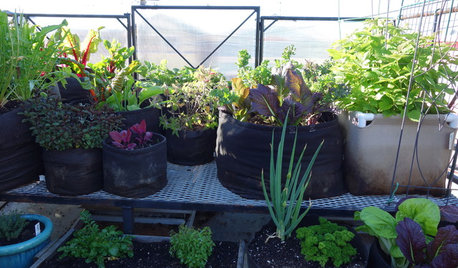Grafting tomatoes
ferroplasm Zone 7b
9 years ago
Featured Answer
Sort by:Oldest
Comments (10)
PupillaCharites
9 years agodigdirt2
9 years agoRelated Professionals
Oconomowoc Landscape Architects & Landscape Designers · Palm Springs Landscape Architects & Landscape Designers · Simi Valley Landscape Architects & Landscape Designers · Boca Raton Landscape Contractors · Brandon Landscape Contractors · Bridgeport Landscape Contractors · Byram Landscape Contractors · Fairview Landscape Contractors · Gainesville Landscape Contractors · Mastic Beach Landscape Contractors · Everett General Contractors · Greenville General Contractors · Hammond General Contractors · Saint Paul General Contractors · Montgomery County Decks, Patios & Outdoor Enclosuresferroplasm Zone 7b
9 years agodigdirt2
9 years agosocalgal_gw Zone USDA 10b Sunset 24
9 years agoferroplasm Zone 7b
9 years agotheforgottenone1013 (SE MI zone 5b/6a)
9 years agodigdirt2
9 years agoPupillaCharites
9 years ago
Related Stories

FARM YOUR YARDIf You Have Room for Only One Summer Crop ...
Get an edible that’s long on flavor even if you’re short on space, with a long-time gardener’s favorite picks
Full Story
EDIBLE GARDENSHow to Add an Apple Tree to Your Edible Garden
Readily available, beautiful and fragrant, apple trees offer four-season interest along with crisp, juicy fruit
Full Story
GARDENING GUIDESVegetables and Flowers Mix in Beautiful Edible Gardens
Ornamentals, meet your edible garden mates. We know you'll get along just beautifully
Full Story
GARDENING GUIDES6 Ways to Grow Edibles in Small Places
No big backyard? Join in the grow-your-own fun with these small-space ideas for planting vegetables, fruits and herbs
Full Story
GARDENING GUIDESPacific Northwest Gardener: What to Do in May
Take advantage of May's warmth to prune spring blooms and plant vegetables and annuals for a summer bounty
Full Story
BEFORE AND AFTERSSee 6 Yards Transformed by Losing Their Lawns
Wondering whether a turf lawn is the best use of your outdoor space? These homeowners did, and they found creative alternatives
Full Story
LANDSCAPE DESIGNHow to Create an Unforgettable Garden
Make an impression that will linger long after visitors have left by looking for the possibilities and meaning in your landscape
Full Story
FARM YOUR YARDAn Urban Greenhouse Overflows With Edibles
Making meals just means stepping into the yard for a San Francisco couple who revamped an old orchid house
Full Story
EVENTSOn Show: Weird, Wondrous Science Meets Design
Houses grown, not built. Power-generating soil. And snail poop that ... well, see for yourself in our coverage of a new Rotterdam exhibit
Full StoryMore Discussions






socalgal_gw Zone USDA 10b Sunset 24